 Many mini electronic modules are available in the market for providing quick plug-and-play solutions. We can use some of these modules to make a low-cost, portable, 15W public address (PA) system that includes a battery management system (BMS).
Many mini electronic modules are available in the market for providing quick plug-and-play solutions. We can use some of these modules to make a low-cost, portable, 15W public address (PA) system that includes a battery management system (BMS).
Construction and working
Fig. 1 shows the connection diagram of the project, which uses three main modules along with three lithium-ion batteries (B1, B2, and B3). There are the following main blocks in this project:
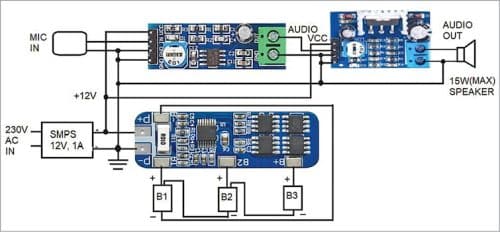
- LM386 amplifier module, which acts as preamplifier
- TDA2030 audio amplifier module, which acts as a power amplifier
- 3S 10A, 12V 18650 lithium-ion battery charger protection module
- Three 3.7V 18650 lithium-ion battery banks
- 12V DC power supply
LM386 audio amplifier module
It is a miniature module with an onboard LM386 chip (700mW analogue input, class-AB audio amplifier). It is a simple operational amplifier (op-amp), which is best suited for low-power audio amplification applications. Fig. 2 shows the amplifier module, which has a gain of around 200. It has an on-board 10-kilo-ohm variable resistor to adjust the gain. There is an on-board power indicator LED too.
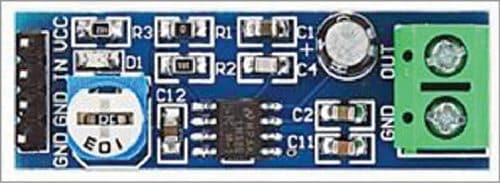
The module has a generic operating voltage between 4 and 12V DC and an on-board potentiometer to increase/decrease the volume. It has low static power consumption and quiescent current of about 2mA that is suitable for a battery-powered device. It has four pins, namely, VCC, Vin, audio GND, and supply GND. Due to its high gain and low distortion, the board can be used as a preamplifier. This helps to connect the module easily to a microphone.
A dynamic microphone is used here, which acts as an input to the preamplifier module. A dynamic microphone is a transducer audio device that produces sound through a moving electrically conductive diaphragm and a permanent magnetic structure. Dynamic microphone has simple advantages like plug and play, output electrical signal that is directly proportional to the input voice, and electrical voltage output of the order of a few millivolts. Whereas a condenser microphone needs a little extra circuitry to drive the preamplifier module. The output of the preamplifier module is connected to TDA2030A audio amplifier module (Fig. 3).
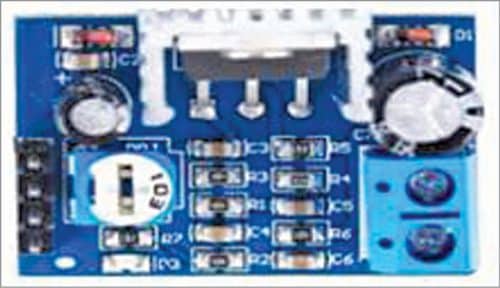
TDA2030A audio amplifier module
This module is based on the famous TDA2030A audio amplifier IC and provides 18W power output with very low harmonic distortion. It has an operating voltage range of 6 to 12V with 10-kilo-ohm adjustable resistance to adjust the volume and an onboard LED power indicator. A 15W speaker can be used to connect to the output power amplifier. A 6.5mm mono microphone female socket can be used for connecting the microphone to the preamplifier.
18650 BMS module
To make the system portable, the 18650 model lithium-ion 2500mAH, 3.7V rechargeable batteries are used. The batteries have a high energy density and low self-discharge. Lithium-ion batteries can be recharged hundreds of times and are highly stable. This provides better power efficiency as a single cell has longer charge retention than other rechargeable battery types.
However, deep discharge makes the voltage of lithium-ion cells fall below a certain level where these cannot be recharged further and become useless. To avoid this, we use the 3S 10A, 12V 18650 lithium battery charger board protection module (Fig. 4). Here, 3S stands for the three 18650 batteries’ series combination, 10A stands for the maximum discharge current limit, and 12V stands for the operating voltage.
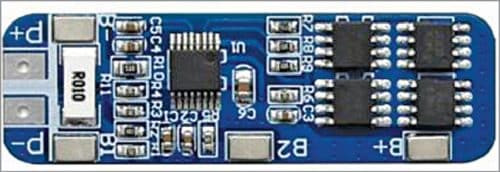
The BMS has an overcharge detection of 4.25V and overdischarge detection of 2.5V per cell. The batteries and the BMS module are connected as shown in the connection diagram.
A 12V, 1A SMPS charger can be connected for charging and powering up the circuit. Choose a suitable box to fit all the modules, the speaker, and the batteries. The author’s prototype is shown in Fig. 5.
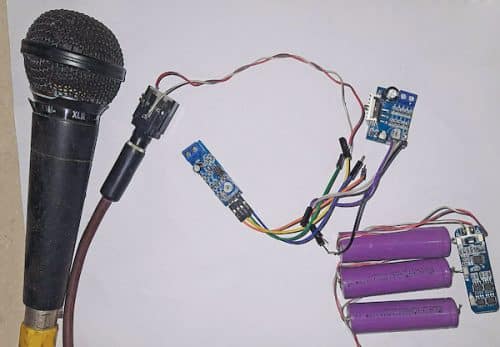
Precautions
Check the polarities of the modules before making connections. Never short a battery. Lithium-ion batteries are highly sensitive to high temperature, so avoid exposure to high temperatures. Maintain some distance between the mic and the modules to avoid feedback echo noise.
K. Murali Krishna works as junior engineer at BSNL, Rajahmundry, Andhra Pradesh. He is an electronics enthusiast, circuit designer, and technical writer








Sir,
Thank you for the interesting and useful project.
What are the output speaker specifications? Only wattage is mentioned. What is the speaker impedance requirement for the power amplifier?